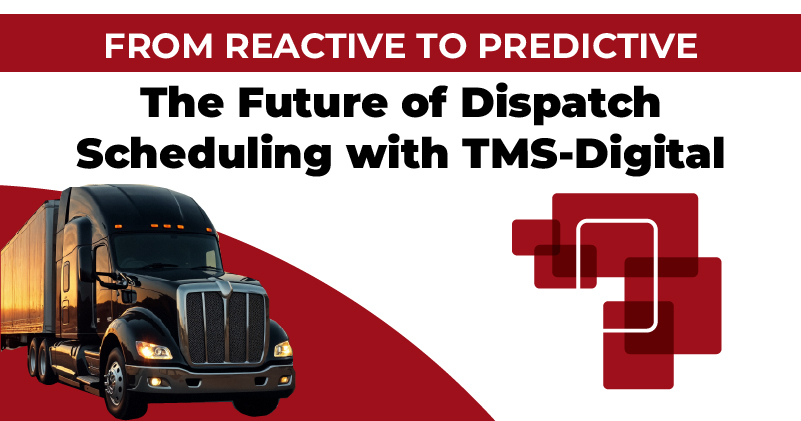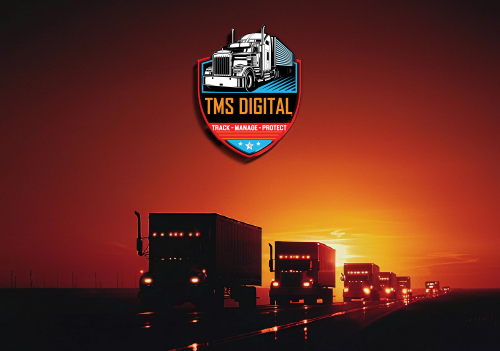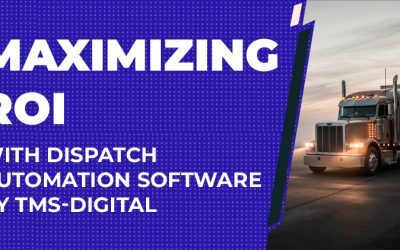
In today’s high-speed logistics environment, accuracy and speed are non-negotiable. Traditional dispatch scheduling methods—relying on spreadsheets and manual adjustments—can no longer keep up with rising delivery demands, evolving customer expectations, and increasing operational complexity. That’s why more companies are transitioning from reactive to predictive dispatch models, powered by intelligent software like TMS-Digital Dispatch Scheduling Solutions.
This blog explores how dispatch scheduling has evolved, the business benefits of predictive systems, and why now is the time to embrace a smarter, AI-enabled dispatch strategy with TMS-Digital.
Legacy Systems: Manual Dispatching and Delayed Decisions
Before digital solutions, dispatching was managed through manual tools—phone calls, paper logs, and gut instincts. These methods worked for small-scale operations but lacked the scalability and flexibility required to adapt to real-time disruptions such as traffic, weather, or last-minute order changes.
A McKinsey study shows that poor scheduling and routing can impact up to 70% of logistics costs. Relying on outdated tools left businesses reactive and vulnerable to costly delays.
The First Shift: Rule-Based Automation
As technology progressed, businesses adopted basic dispatch software that automated core functions—assigning drivers, generating routes, and updating delivery statuses. These systems, though efficient compared to manual methods, were rule-based and inflexible. They could only respond based on predefined conditions, leaving much room for human intervention during disruptions.
This phase marked the beginning of digital dispatch, but the next wave would focus on making these systems smarter and more responsive.
Real-Time Dispatch: Powered by IoT and GPS
The integration of real-time GPS tracking, mobile apps, and IoT sensors brought about the second wave of evolution. Dispatchers gained live visibility into vehicle locations, traffic updates, and delivery statuses.
However, while these real-time systems improved monitoring, they still relied heavily on human decisions. Dispatchers could see delays, but not necessarily prevent them.
The Present and Future: Predictive and AI-Powered Dispatching
Today, TMS-Digital’s Dispatch Scheduling Software incorporates artificial intelligence (AI) and machine learning (ML) to move from monitoring to forecasting. Predictive dispatching doesn’t just identify delays—it anticipates them and takes proactive steps to prevent them.
For instance, if historical traffic data and driver behavior suggest a route is prone to congestion, TMS-Digital reroutes automatically. Predictive maintenance features also flag vehicle issues before they lead to breakdowns, enabling proactive job reassignment.
According to Deloitte, predictive dispatching can reduce planning time by up to 80% and increase on-time delivery rates by over 25%.
Key Features of Predictive Dispatch with TMS-Digital
- Dynamic Route Optimization: TMS-Digital recalculates routes in real-time using traffic, weather, and road condition data, reducing delivery delays and fuel consumption.
- Demand Forecasting: By analyzing historical order patterns and real-time inputs, the system predicts peak times and adjusts vehicle and personnel allocation.
- Driver Behavior Analytics: Monitors driving patterns to optimize driver-job assignments and promote safer, more efficient habits.
- Predictive Maintenance: Monitors vehicle diagnostics to schedule service before breakdowns occur, minimizing downtime.
- Automated Customer Communication: Sends real-time updates and ETA notifications to customers, enhancing satisfaction and reducing missed deliveries.
Why Predictive Dispatching Outperforms Reactive Models
- Higher On-Time Deliveries: Smarter routing and predictive alerts ensure better adherence to schedules.
- Reduced Operating Costs: Lower fuel usage, fewer delays, and more efficient driver utilization improve margins.
- Improved Customer Experience: Accurate ETAs and transparent communication foster trust and repeat business.
- Scalability: As business volume grows, predictive systems adapt without the need for additional dispatchers.
A Gartner study revealed that companies leveraging predictive dispatch tools improved service levels by 30% within the first year.
Looking Ahead: Autonomous Dispatching
The next step in dispatch technology is autonomous dispatching, where AI not only predicts but fully automates decision-making. As technologies like autonomous vehicles and drone deliveries become mainstream, platforms like TMS-Digital will integrate these elements into unified, intelligent ecosystems.
Conclusion: Upgrade to Intelligent Dispatching with TMS-Digital
The move from reactive to predictive dispatch scheduling isn’t just a technological upgrade—it’s a strategic necessity. TMS-Digital Dispatch Scheduling Software transforms how fleets operate, helping you forecast disruptions, optimize resources, and exceed customer expectations.
If you’re still stuck in manual or rule-based systems, now is the time to upgrade to a smarter solution.










